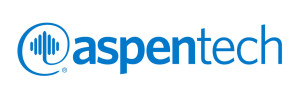
Aspentech states that Aspen Plus V8 supports as follows CAPE-OPEN version 1.0 Interfaces:
- CAPE-OPEN Unit Operation Socket – sequential modular
- Allows any CAPE-OPEN Unit to be used in an Aspen Plus Simulation
- CAPE-OPEN Thermodynamics Socket
- Allows CAPE-OPEN Property Packages to be used to provide property calculations in Aspen Plus simulations.
- CAPE-OPEN Reactions Interfaces
- A partial implementation to allow Unit Operations to access Reaction schemes
Using CAPE-OPEN interfaces of Aspen Plus:
- University of Utah (MATLAB Unit Operation): Corredor, E. C., Chitta, P., & Deo, M. D. (2019). Techno-economic evaluation of a process for direct conversion of methane to aromatics. Fuel Processing Technology, 183, 55–61.
- Université de Lorraine (MEMSIC):
- Álvaro A. Ramírez-Santos, Christophe Castel, Eric Favre (2017), Utilization of blast furnace flue gas: Opportunities and challenges for polymeric membrane gas separation processes, Journal of Membrane Science, 526, pp. 191–204.
- Ramírez-Santos, Á. A., Bozorg, M., Addis, B., Piccialli, V., Castel, C., & Favre, E. (2018). Optimization of multistage membrane gas separation processes. Example of application to CO2 capture from blast furnace gas. Journal of Membrane Science, 566, 346–366.
- Jozsef GASPAR, Philip Loldrup FOSBØL (2016), Simulation and multivariable optimization of post-combustion capture using piperazine, International Journal of Greenhouse Gas Control, vol. 49, pp. 227–238.
- Karthik Subramanyan, Urmila Diwekar, Stephen E. Zitney (2011), Stochastic modeling and multi-objective optimization for the APECS system, Computers & Chemical Engineering, Volume 35, Issue 12, pp. 2667-2679.
- Fermeglia, M., Longo, G. and Toma, L. (2009), Computer aided design for sustainable industrial processes: Specific tools and applications. AIChE J., vol. 55, pp. 1065–1078.
- Michel Pons (2004), Example of use of CAPE-OPEN at ATOFINA, 1st CAPE-OPEN US Conference, August 24, 2004, Cincinnati, Ohio.
